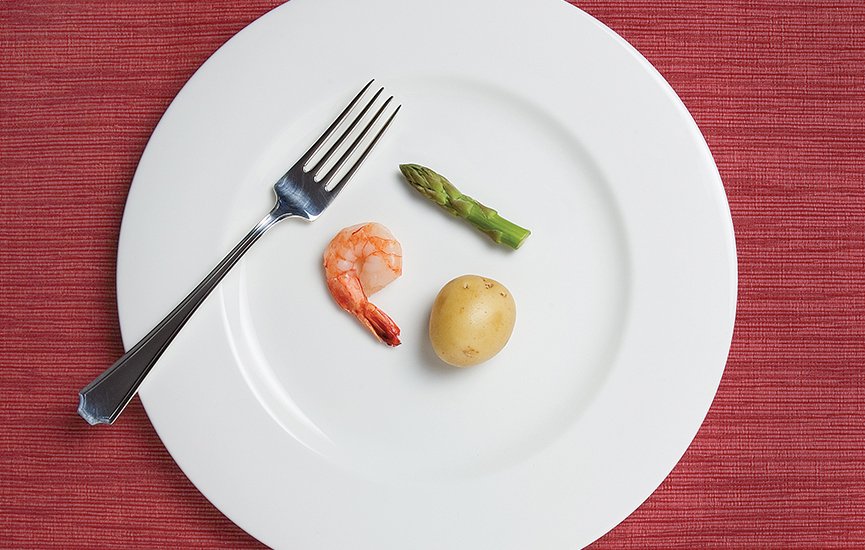It’s not often that we make a positive association between starvation and survival. And when we think about advances in longevity, our thoughts likely turn to fascinating concepts such as human genome sequencing rather than the more mundane topic of diet and nutrition. But what if a key to living longer and reducing our risk for cancer and aging diseases lies in how nutrition affects our cellular makeup?
That’s just what researchers at the University of Southern California’s Longevity Institute have found. In a study published in the journal Cell Stem Cell, they made a connection between fasting and the reduction of immune system defects and diseases by analyzing the survival rate of cancer patients who fasted prior to receiving chemotherapy. The blood chemistries of the “starved” patients showed a jump in the number of circulating bone marrow stem cells (a good effect) and a decrease in the levels of IGF-1 and PKA, which are two molecular bad actors that contribute to the development of cellular injury and cancer.

It appears the brief period of pre-chemo starvation forced the patients’ bodies to limit all non-vital metabolic activity, resulting in a culling of older, less effective white blood cells. Once fed, the patients generated large numbers of healthy white blood cell stem cells to reenergize their immune system. The net effect: a healthier immune system capable of withstanding the toxic onslaught of chemo to ensure survival.
This model of starvation-induced cellular culling with subsequent stem cell release and repair on feeding may apply to all tissues, not just bone marrow. Planned starvation, in the form the USC researchers dubbed fast-mimicking diet (FMD), may repair and regenerate the entire aging body.
It’s a bodily response shaped in our Paleolithic past. Humans were once roving hunters and gatherers, subject to seasonal starvation and dependent on food stores that could keep for winter famine. In the winter that meant surviving on foods high in fat (lard) and carbohydrates (stored grains) but low in protein (absence of fresh meat)—the opposite of what the fad Paleo diet promotes. The periodic fasting might have defined our species’ calorie intake and set a future pattern for how planned starvation today can be a means to a longer life.

The scientists at USC followed up their research with a series of incremental studies that affirmed their findings and allowed them to fine-tune the amount of “starvation” necessary to maximize health benefits. The good news: It’s not that much.
Through animal and human trials, researchers found that a five-day “fast” that provided subjects with the equivalent of 700 calories a day in the form of 50 percent fat, 35 percent carbs and 15 percent protein—akin to our Paleolithic winter diet—resulted in dramatic improvement in biomarkers associated with cellular repair, immune system function, decreased cancer risk and neuronal maintenance.
The FMD, by virtue of its close resemblance to our prehistoric fasting, is probably grounded in a body-wide, DNA-based pattern for increasing overall survival. Current thinking is that most of us should do it only three to four times a year, but you should consult your physician before starting any FMD regime. The lead USC researcher created Prolon, a five-day prepackaged food plan available with a prescription ($299, prolonfmd.com).
I suspect its full benefits are not yet known. But I believe we will see that calendared fasting with some version of the FMD will result in a measurable improvement in human health. If there’s one thing science continues to demonstrate, it is how much control we have over our lives.
FEAST OR FAMINE
Dr. Valter Longo, director of the Longevity Institute at USC, created ProLon, a five-day prepackaged food plan available with a prescription to help make the FMD more easily adaptable ($299, prolonfmd.com). Here is a sample of what a FMD five-day plan would look like. Consult your physician before starting any FMD regime.
DAY ONE
FMD-permitted calories: 1,090
Breakfast: black or green tea; one boiled egg (78 calories) plus one slice whole-wheat toast (68 calories)
Lunch: black coffee or tea; small green salad with avocado, dressed with olive oil (300 calories)
Dinner: large helping of mixed green vegetable soup with borlotti beans, and one slice of whole-wheat bread (616 calories)
DAY TWO
FMD permitted calories: 725 calories max
Breakfast: black or green tea; one poached egg with a grilled tomato (100 calories)
Lunch: miso soup (21 calories)
Snack: seven walnut halves (90 calories)
Dinner: vegetable chili with kidney beans and sour cream (514 calories)
DAY THREE
FMD permitted calories: 725 calories
Breakfast: black or green tea; one slice whole-wheat toast with two teaspoons of cashew butter (150 calories)
Lunch: espresso; smoked salmon (3.5 ounces) with watercress (200 calories)
Snack: blueberries (3.5 ounces) (57 calories)
Dinner: large portion vegetable soup (318 calories)
DAY FOUR
FMD permitted calories: 725 calories
Breakfast: black or green tea; half an avocado on one slice of whole-wheat toast (220 calories)
Lunch: espresso; 8.5 ounce glass of almond milk (60 calories)
Snack: two squares of 70 percent dark chocolate (110 calories)
Dinner: large green salad with 3.5 ounces shrimp, dressed with olive oil and lemon juice (335 calories)
DAY FIVE
FMD permitted calories: 725 calories
Breakfast: black or green tea; two boiled eggs (156 calories)
Lunch: half an avocado on whole-wheat toast, miso soup (210 calories)
Snack: an apple (60 calories)
Dinner: large portion of vegetable soup with one-third of an ounce toasted pine nuts (299 calories)
Dan Carlin, a physician, is CEO of WorldClinic, a New London, N.H.-based telemedicine practice.










